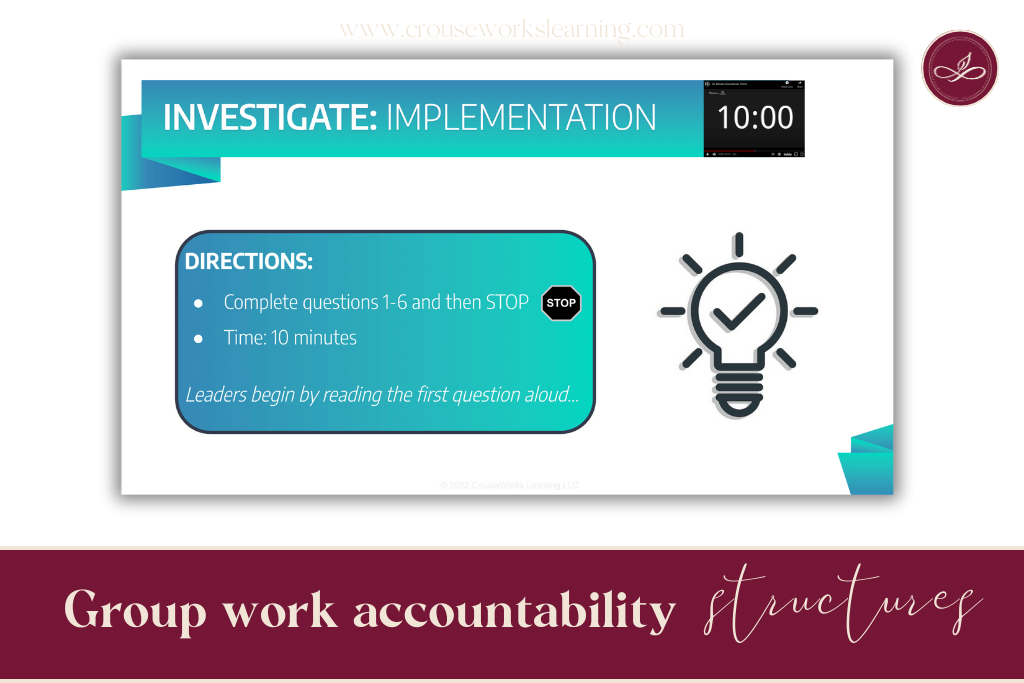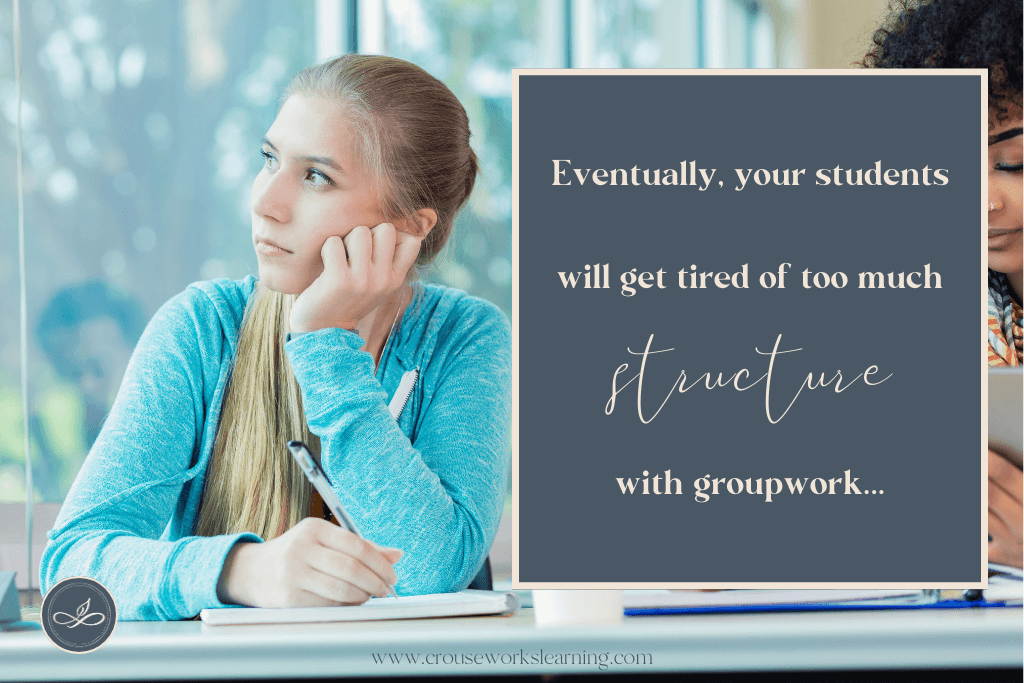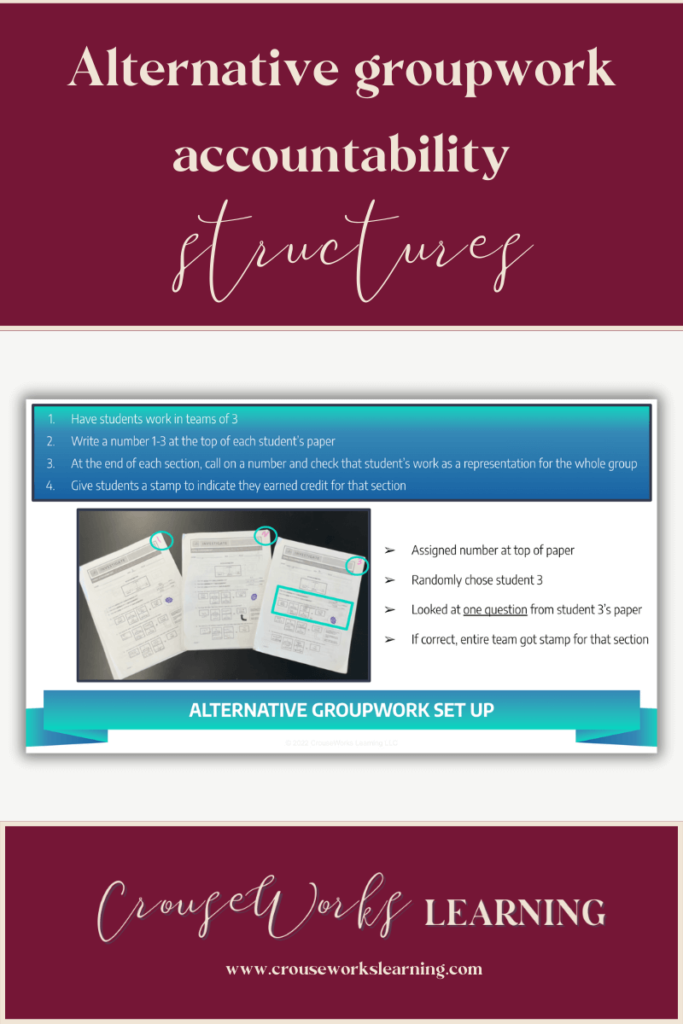Ah, group work – the love-hate relationship every teacher knows too well. Can I ask, when you first started your teaching adventure, did you also have this grand idea about turning your science classroom into a collaboration haven? Because the fervor was certainly real for me! I mean, what science teacher wouldn’t be thrilled about nurturing those oh-so-important Next Generation Science Standard teamwork skills, right? Who wouldn’t want to turn their science classroom into a mini experimental Google-Apple-Amazon-inspired collaborative hub?!
Still, to this day, I vividly recall diving into the rabbit hole of collaboration strategies during my teacher preparation days. Back then, I was brimming with the vision of being that rockstar “next-generation science” educator. No more would science class be just a monologue of facts; instead, it was all about interactive group dynamics. I saw myself as the ultimate scientific collab guru- adeptly guiding my students through the art of collaboration and igniting their passion for brainstorming and working together in think-tanks!

And then, well, fast forward to teaching in the classroom, and reality hit – hard. The first couple of years I dished out group assignments absolutely showed me I was kind of, well, clueless about the real deal. You see… collaboration is not just about getting students to actually start a task, organize themselves, and see it through (though, let’s be honest, that’s a battlefield in itself).
Nope, there’s this whole other side to collaboration, too- like nurturing student dialogue and communication skills.
I mean… I don’t know about you but why does overhearing student-talk sometimes feel like watching two toddlers thoughtlessly crash toy cars into each other over and over again? Is it just me, or is it wild how students can be less patient with each other than we, as teachers, are with a class full of energetic teenagers?
And then there’s the grand finale – like when deadlines approach and the workload tsunami hits, or stage fright decides to make an appearance. Suddenly, poof, group productivity vanishes into thin air entirely.
Remember that ego boost I got from imagining myself as a collaboration maestro? Yeah, if you can’t already tell, that quickly evaporated as a first-year teacher (and second-year teacher and third-year teacher).
So, what have I learned since then? Did I ever manage to dig my way out of my profound naivety and misguided notions about group work? Did I ever figure out on-the-ground strategies that actually worked to promote scientific student collaboration?
The short answer (and long answer) is yes. But it took time. And many, many years of trial and error. Which is why I’m writing this blog!
I’ve learned over the years that groupwork can be the most productive classroom tool or become the most disruptive if not implemented properly. And my hope is to help you skip the painful learning curve that goes into teaching effective groupwork strategies and focus on what matters most: enjoying seeing your students work together as scientists.
So below are my tried-and-true PRACTICAL tips for getting your groupwork flowing like a well-oiled machine, no matter what classroom setting you find yourself in!
TIP #1: Partner work is more effective than groupwork
Having students collaborate in pairs injects a refreshing dose of accountability into the learning process. When working as partners, students know they’re in it together, which encourages a heightened commitment to completing tasks. I’ve found that students are much more likely to participate in a lab or complete a packet when working with 1 partner (and are not placed in a group of 4).

Moreover, this partner dynamic often leads to a natural support system – when one partner hits a roadblock, the other is right there to offer insights and encouragement, fostering a collaborative spirit that eases the journey through challenges. And remember, you can always establish groups of 4 later by simply having sets of partners join together. So you really do get the best of both worlds!
If you’re worried about partners not talking to each other as they work, you can always establish quick and simple partner roles to provide some accountability. For example, during partner work, I would ask my freshmen students sitting on the left to read the odd questions on the activity aloud and students sitting on the right to read aloud the even questions. Collaborative roles do not have to be sophisticated!

TIP #2: P.O.G.I.L. is king for student collaboration structures
If you have never heard of POGIL, it is an instructional company that provides small-group science activities where students have collaborative roles to explore concepts that involve guided inquiry and problem-solving. The POGIL acronym stands for Process Oriented Group Inquiry Learning. If you haven’t checked them out, I highly recommend you take a look. Click here for a link.
One thing I do want to mention about POGIL, though… While I’ve found POGIL’s collaborative structures to be a helpful starting place for collaboration in my classroom, I’ve found that my students need a bit more scaffolding than it provides. I often work with students who need more support (e.g., sentence stems, simplified wording, chunked text). Because of that, I use these modified role cards. You can check out my role cards in the PDF pages below.
TIP #3: Students won't naturally carry out their collaboration roles unless...
Oh, how I wish students would always do exactly what you said when you said it! Alas, that never happens. And collaborative role cards are a great example of that. I have learned the hard way that even if you have beautiful, color-coded, laminated role cards for students, students will not necessarily engage in them automatically.

You must deliver the role cards with hype and some accountability structure.
So, use do I use organic, non-cheesy, high-schooler-approved hype to roll out my groupwork cards?
Well, when I first introduce the role cards, I frame the roles as strengths; I will say, “Point to the person in your group who would be good at starting a conversation and keeping it going. Okay, that’s your leader… Now, who in your group is comfortable asking for help from other groups around the room? Point to them…”
FYI: The kids love pointing and volun-telling the other students in their group to take certain roles.

Next, I lay out my accountability structures.
I have students write down their roles at the top of their papers, and I say something to the effect of, “You need to remember your role because you are getting points today not just for completing the work but also for how well you complete your role.”
Then, I pass out the role cards and quickly review the roles with the class. I will say, “Okay [student name], you are a leader; please read the board and tell me what a leader must do to earn points today.”

Now, I’ll admit I don’t often grade students on completing their roles. It just becomes too hard to keep track of.
Instead, what I’ll do (as students are working) is walk around the room with a clipboard and pretend like I’m taking serious, detailed notes on whether students are fulfilling their roles. However, what I’m really doing is listening for positive quotes I can share the next day as shout-outs, such as, “Can you help me understand this?” or “Let’s wait for everyone before we move forward.” I then scribble those positive quotes down on the clipboard and project them up on the board the next day for class shout-outs.
This trick works like a charm because kids always assume if you’re walking around the room with a clipboard (and scribbling down notes) that you mean business. They will automatically straighten up because they think you are walking around and “grading” them.
Now since most of my activities take more than one class period, I do have students continue in their same roles for multiple days. This helps because students often get better and more comfortable with their roles over time.


TIP #4: Your group work structure will only last 10 minutes unless...
We’ve all experienced it as teachers. We’ve laid out the sentence stems, laminated the role cards, and hyped students up about their new group roles. And it seems to work… for 10 minutes… and then the structures die off, the students begin to work independently, and all collaborative conversation ceases.

That is why it is important to not only build up momentum and accountability structures at the beginning of the group work but also sustain that momentum and accountability structure throughout the activity. So how do you do that?
The answer, my friend, is chunking.
When you do group work, it becomes essential to chunk the activity into sections. For example, I’ll have groups only complete a certain number of questions for 10 minutes before we come back together as a class. After we’ve discussed the key answers as a class, students move on to the next chunk (section) of the assignment.
I’ve found that students need a change of pace every 10 minutes or so to keep them engaged and focused. That’s why the class check-ins become quite helpful.

TIP #5: Your students will get tired of too much structure unless...
Students will do great with group work roles for 2-3 days, then fall off the wagon. At that point, you will need to move on to a different kind of activity. That is why I only bring out my group role cards once or twice per unit.

For better or worse, you can’t enforce group roles with every activity.
And sometimes, as teachers, we just want students to be able to collaborate without a lot of rigidity.
So, for the times when both my students and I need a little break from all the structure, I’ll have students work in groups of 3-4 (preferably the smaller, the better). I’ll then assign each student a number. At the end of each packet section, I’ll call a number at random and check that students work as a representation for the whole group. I then give students a stamp indicating their earned credit for that section.
Again, it becomes essential to chunk the activity into sections when you do group work. I’ll make sure groups only complete a certain number of questions before we come back together as a class.

To wrap up
The harsh truth: as teachers, we often feel like we just ran a marathon without training. We often feel like we started a race without being clued into the real high jumps, sand pits, and slippery escapades it entailed. And that’s the thing about teaching – it’s not always the fairy tale we envisioned, but it’s definitely one heck of an adventure.
However, I hope these tips and tricks on group work will help you feel a step closer to creating that collaboration haven you first envisioned. And in the meantime, I hope you keep chasing those Google-Apple-Amazon-inspired collaboration dreams from your student teaching days, even if they come with a side of chaos!

P.S. If you’d like to see even more classroom management teacher hacks for the rest of your lesson, download my FREE “How to Manage Your Classroom Like a Boss” guidebook.
It’s an all-in-one guidebook that walks you through my best-kept strategies for getting students to start working at the bell, maintaining that momentum during class, and keeping your students working to the very last minute of class.
And the best news of all is it’s FREE! So download the guidebook now!

